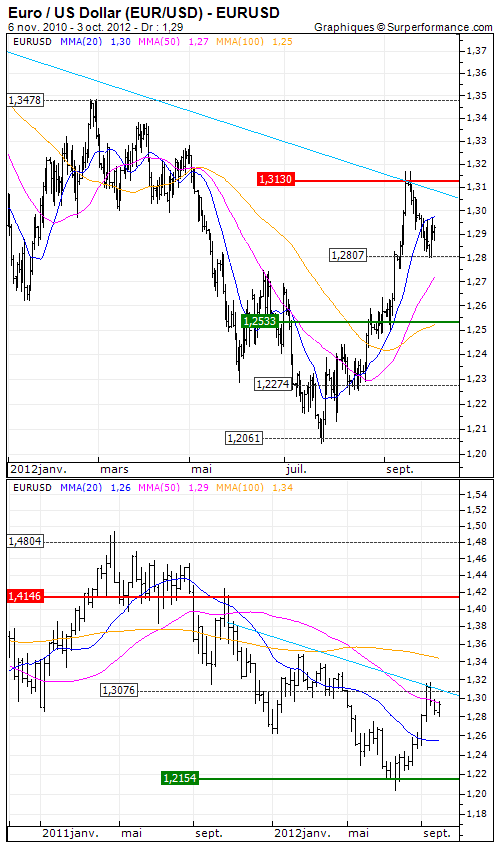Euro / US Dollar (EUR/USD) : Heavy macroeconomics
By Alexandre Nutte
After the ECB and the Federal Reserve, the Bank of Japan increased its program of asset purchases before the announcement by the People's Bank of China to inject a record amount of 365 billion yuan (about 45 billion euros) in the money market. National Bank of Australia surprised economists by lowering its key rate by a quarter point to 3.25% before the monthly meetings of the Bank of England and the ECB on Thursday, October 4.
Concerns gradually move on global economic data with the U.S. GDP growth in Q2 has been revised down from 1.7 to 1.3%. In addition, the Chinese manufacturing activity shows a further contraction and the latest EU figures suggest an imminent recession.
Technically, conflicting fundamental signals accumulate for several days, preventing the euro to choose a trend. If the level is still relatively high against other currencies, it could instead pursue a horizontal evolution against the US dollar, by temporarily enclosing between USD 1.28 and 1.3130.






